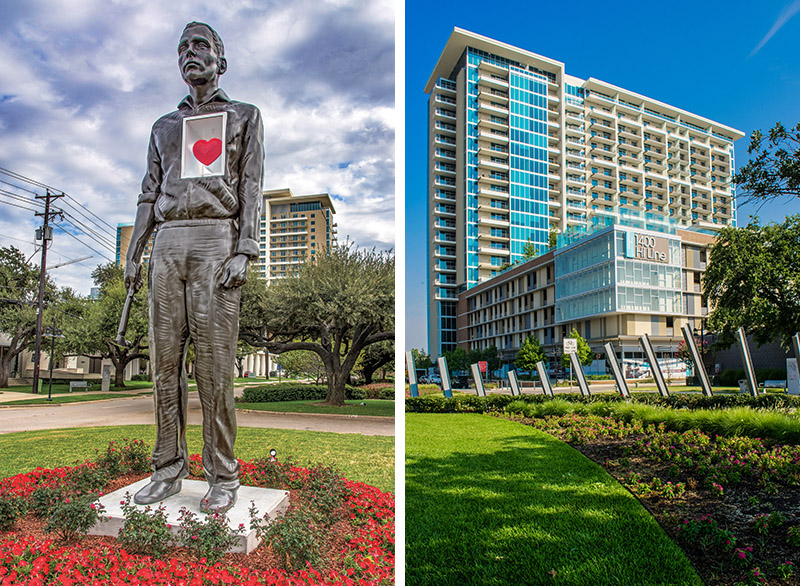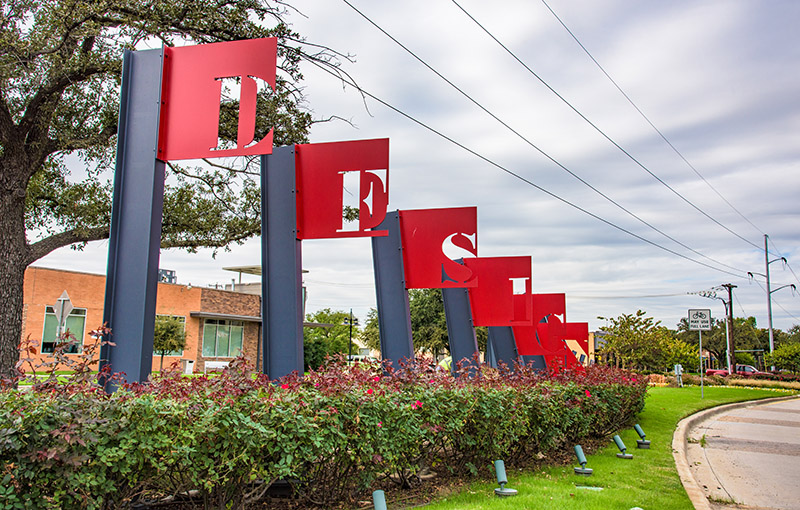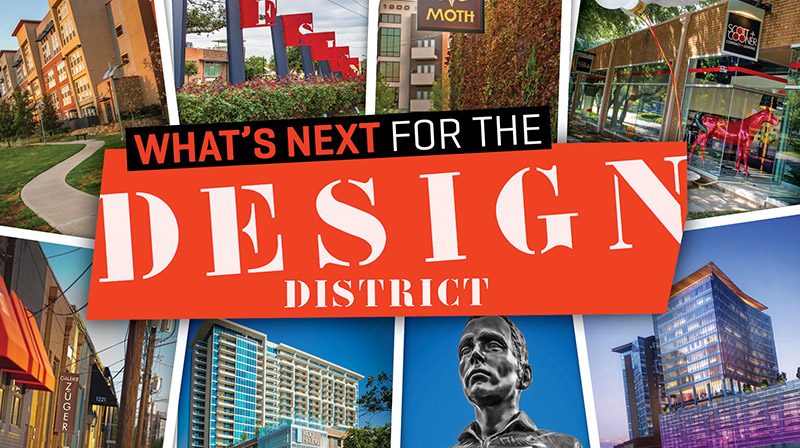Dunhill Partners’ Bill Hutchinson is bringing in new hotels, office space, residences, and amenities— all built around the district’s “heart and soul.”
Dallas-based Dunhill Partners isn’t known as a development company. But for nearly eight years, Dunhill President and Founder Bill Hutchinson had kept his eye on then-owner and friend Mike Ablon, whose PegasusAblon had spent years repositioning and reorganizing the area. Hutchinson realized the district’s potential, and threw his hat in the ring to buy it. When it acquired the Dallas Design District in November 2014, it wasn’t taking another one of its signature, commercial shopping center-style investments.
“I had watched what Mike had done with interest and amusement,” Hutchinson says. “I knew that the potential was there to create much more significant value and continue to develop the area into what could be, in my opinion, the hottest district of the city. I look at it a little bit differently than everyone else. I look at it as, the Design Center needs to stay a Design Center that focuses on the showrooms, the designers. They are the heart and soul of the district. All we’re going to do is compliment them with residential and retail and restaurants, and build around them.”
This tenet, shared by Hutchinson and Ablon—and Trammell Crow before them—has long been crucial to the Design District’s integrity as its own piece of Dallas. Ablon says that although the area has been through several distinct iterations of ownership and personality over the course of its history, its industrial and manufacturing roots have held steady. “There was this whole notion about taking it from a warehouse/industrial district to a showroom/gallery/light-manufacturing center to this multifaceted piece of city fabric that could have a living experience and a dining experience,” he says. “It kept the ethos of what it already had and held it for the future, as opposed to scrapping everything and putting in more of the same.”

One of the earliest additions to PegasusAblon’s Design District was Meddlesome Moth, famed restaurateur Shannon Wynne’s modern gastropub concept at the corner of Oak Lawn Avenue and Hi Line Drive, which opened its doors in 2010. Setting up shop in an old tile and flooring showroom, Wynne was the perfect tenant to serve as a steward of the district’s existing personality.
“We kept the tile on the floor and on the walls to support the notion that those spaces had been designed as a showroom of tile,” Ablon says of Meddlesome Moth and neighboring Ascension Coffee, which Australian native Russell Hayward opened in 2012. “When you’re there, you’re unmistakably in the Design District. You walk in off the street and the environment on the inside carries on what the whole area’s about, and that’s the feel that’s so different, because you wouldn’t have an Ascension like that in Plano.”
Hutchinson’s plans are bigger and bolder. First up is the world’s fourth Virgin Hotel from Sir Richard Branson’s British Virgin Group hospitality subsidiary. It follows other Virgin hotels in Chicago, New York, and Nashville. Dunhill Partners also is working to secure tenants for the Design District Tower, a 240,000-square-foot office building at Edison Street and Stemmons Freeway. Also in the works is a Joie de Vivre boutique hotel, between Richard Ellman and John Tesar’s Oak and the Kim Dawson Talent Agency. It will be topped by more than 250 apartments from Ilume.
Dunhill’s plans don’t stop there. It recently inked a lease with Richard Ellman and Joe Palladino to build Quill, which will open next to Oak. “There’s nothing like that right now in the Design District,” Hutchinson says of the high-end lounge. “With that in place for people to come hang out, mix, and mingle, soon they won’t have to leave the area when they want to stay out later.”
Dunhill also signed two new concepts from Tim Headington restaurant group, Raised Palate, which will occupy 10,000 square feet in the Decorative Center at Oak Lawn and Hi Line. (Headington is an investor with Hutchinson in the Design District.)
“They’re still figuring out what concepts they want to put in, but we have a fully executed lease, and they’re going to make it unbelievable,” says Andy Crosland, executive vice president and director of leasing and acquisitions at Dunhill Partners. “They’re putting a lot of money into the space. There’s going to be two concepts side-by-side with a breezeway cutting in between that backs up to Oak Lawn where they can do some seasonal vendors—whether it’s selling popsicles or hot chocolate or coffee—to create more of a pedestrian-friendly environment for some of these showroom tenants that are open to the public.”

Dunhill Partners is also implementing public art initiatives in the district, which honor the heart and soul of its showroom and designer tenants. It recently unveiled a new Andrew Myers statue on Hi Line called “The Heart of the Design District,” which features a 20-foot-tall, hammer-wielding craftsman with an exposed, LED-lit heart that beats as if it were alive. Crosland says that Dunhill will continue with these efforts, as well as with programming like farmers markets and seasonal and holiday events.
“We want to be able to try and paint some of the buildings, and do murals on the sides of buildings to really improve the landscape and the lighting so it’s safe, and you can walk around and shop and eat,” he says. “We want to keep the integrity of what it is, and the way and the style that those old buildings are, because architecturally, it’s really cool.”
Although it now holds the biggest piece of the pie, Dunhill isn’t the only developer with projects underway in the district. Trammell Crow Residential broke ground on the 309-unit Alexan Riveredge apartments in March 2015. It’s planning to have put the first units online in October 2016 and complete construction in June 2017. Additionally, Wood Partners announced plans to construct a 400-unit apartment building called Alta Strand that will open in 2017. They’ll join the Trinity Loft residential project developed by Jim Lake Cos., which has owned property in the Design District property for more than 40 years.
With more residents moving in and more projects coming online, the still-unwritten fourth chapter in the Design District’s history is bound to be a lively one.
“When we bought the Design District, I felt like we weren’t just doing another commercial real estate deal, but we were actually becoming a part of a community,” Hutchinson says. “Now we’re responsible for over 100 tenants—700,000 square feet of showrooms and galleries. These people have become friends of ours, they have become businesses we want to help grow and do better.”


